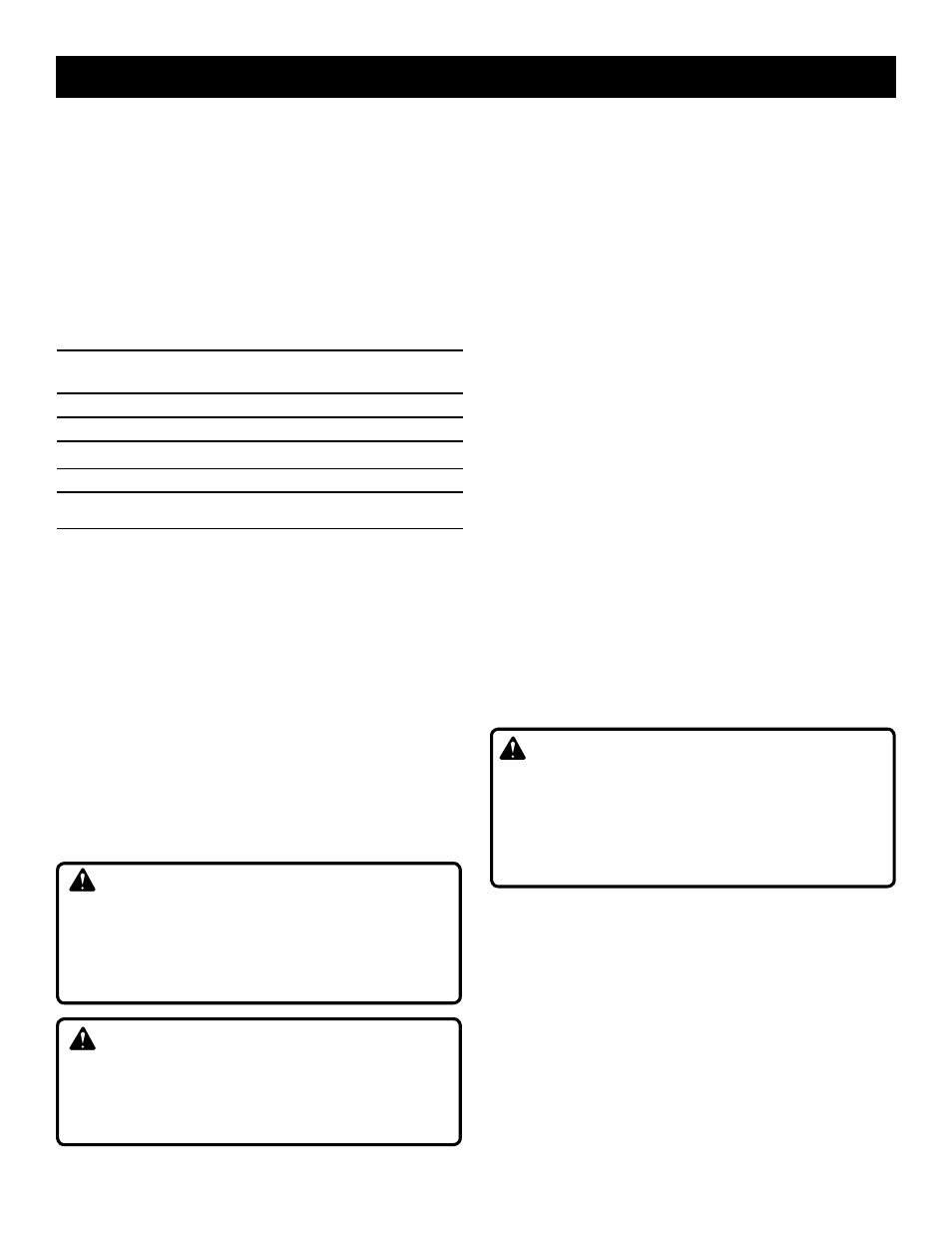Electrical – Ryobi WS722L User Manual
Page 5

5 — English
ELECTRICAL
ELECTRICAL CONNECTION
This tool is powered by a precision built electric motor. It
should be connected to a
power supply that is 120 V, AC
only (normal household current), 60 Hz. Do not operate
this tool on direct current (DC). A substantial voltage drop
will cause a loss of power and the motor will overheat. If the
saw does not operate when plugged into an outlet, double
check the power supply.
SPEED AND WIRING
The no-load speed of this tool is approximately 3,450 rpm.
This speed is not constant and decreases under a load or
with lower voltage. For voltage, the wiring in a shop is as
important as the motor’s horsepower rating. A line intended
only for lights cannot properly carry a power tool motor. Wire
that is heavy enough for a short distance will be too light for
a greater distance. A line that can support one power tool
may not be able to support two or three tools.
GROUNDING INSTRUCTIONS
See Figure 1, page 12.
This product must be grounded. In the event of a malfunction
or breakdown, grounding provides a path of least resistance
for electric current to reduce the risk of electric shock. This
tool is equipped with an electric cord having an equipment-
grounding conductor and a grounding plug. The plug must
be plugged into a matching outlet that is properly installed
and grounded in accordance with all local codes and ordi-
nances.
Do not modify the plug provided. If it will not fit the outlet,
have the proper outlet installed by a qualified electrician.
WARNING:
Improper installation of the grounding plug is able to
result in a risk of electric shock. When repair or
replacement of the cord is required, do not connect the
grounding wire to either flat blade terminal. The wire with
insulation having an outer surface that is green with or
without yellow stripes is the grounding wire.
Check with a qualified electrician or service personnel if the
grounding instructions are not completely understood, or if
in doubt as to whether the tool is properly grounded.
Repair or replace a damaged or worn cord immediately.
This product is for use on a nominal 120 volt circuit and
has a grounding plug similar to the plug illustrated in
Figure 1, page 12. Only connect the product to an outlet
having the same configuration as the plug. Do not use an
adapter with this product.
Ground Fault Circuit Interrupter (GFCI) protection should be
provided on the circuit(s) or outlet(s) to be used for the tile
saw. Outlets are available having built-in GFCI protection
and may be used for this measure of safety.
EXTENSION CORDS
Use only 3-wire extension cords that have 3-prong ground-
ing plugs and 3-pole receptacles that accept the tool’s plug.
When using a power tool at a considerable distance from the
power source, use an extension cord heavy enough to carry
the current that the tool will draw. An undersized extension
cord will cause a drop in line voltage, resulting in a loss of
power and causing the motor to overheat. Use the chart
provided below to determine the minimum wire size required
in an extension cord. Only round jacketed cords listed by
Underwriter’s Laboratories (UL) should be used.
**Ampere rating (on tool data plate)
0-2.0
2.1-3.4
3.5-5.0 5.1-7.0 7.1-12.0 12.1-16.0
Cord Length
Wire Size (A.W.G.)
25' 16 16 16 16 14 14
50' 16 16 16 14 14 12
100' 16 16 14 12 10 —
**Used on 12 gauge - 20 amp circuit.
NOTE: AWG = American Wire Gauge
Always use an extension cord that is designed for outside
use. This is indicated by the letters “W-A” or “W” on the
cord’s jacket.
Before using an extension cord, inspect it for loose or
exposed wires and cut or worn insulation.
Use only extension cords that are intended for outdoor use.
These extension cords are identified by a marking “Accept-
able for use with outdoor appliances; store indoors while not
in use”. Use only extension cords having an electrical rating
not less than the rating of the product. Do not use damaged
extension cords. Examine extension cord before using and
replace if damaged. Do not abuse extension cords and do
not yank on any cord to disconnect. Keep cord away from
heat and sharp edges. Always disconnect the extension
cord from the receptacle before disconnecting the product
from the extension cord.
WARNING:
Keep the extension cord clear of the working area.
Position the cord so that it will not get caught on lumber,
tools or other obstructions while you are working with a
power tool. Failure to do so can result in serious personal
injury.
WARNING:
Check extension cords before each use. If damaged
replace immediately. Never use tool with a damaged cord
since touching the damaged area could cause electrical
shock resulting in serious injury.
